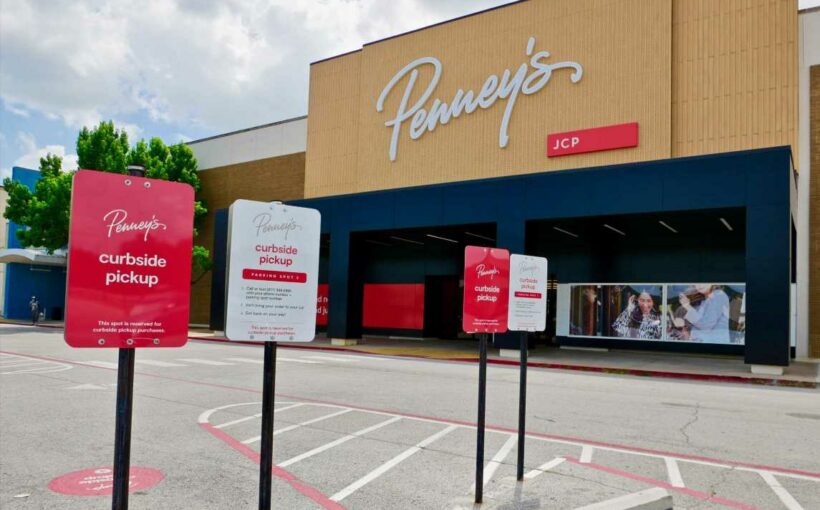The coronavirus pandemic appeared to be the final straw for a number of retailers that filed for bankruptcy in 2020, a year in which major apparel companies including J.C. Penney Co. Inc., Neiman Marcus Group, J. Crew Group Inc., Brooks Brothers, Tailored Brands Inc. and more filed for Chapter 11.
But the economic downturn sparked by the pandemic is expected to have the slow-burn effect it often does, with more companies headed for financial trouble as the pandemic persists into 2021 and the point of widespread vaccinations still lies months away, experts said.
“I think there are a lot of retailers out there who were just on the edge, and trying to make it through, hoping that the holiday season would be successful for them, and successful enough to see a greater future that would allow them to avoid bankruptcy,” said Schuyler Carroll, a partner at Loeb & Loeb LLP.
“What I’m hearing is that there are some of those, and there are some of those that are not going to be able to make it and will be looking to a bankruptcy to try and preserve some future,” he added.
“I think most of the retailers that have made it this far, they’re hoping to avoid a liquidation,” he said. “If their holiday season was not good enough, they’ll have to resort to liquidation or resort to bankruptcy to bring in new investors, or a sale, or slim down their operations in some way.”

Related Gallery
Dressing Up: Greatest Party Looks From the Fairchild Archives
Bankruptcy attorneys are also anticipating a ripple effect from retailers’ financial troubles, expecting that the impact on landlords and suppliers will start to become more apparent in 2021.
More recently, real estate investment trusts including mall operator CBL & Associates Properties Inc. and the Pennsylvanian REIT have filed for bankruptcy protection.
“From the landlord perspective, the economics have shifted,” said Brad Sandler, who co-chairs the creditors’ committee practice group at Pachulski Stang Ziehl & Jones. “REITs that are less stable…they tend to be [those] that have the B- and C-quality malls and I think that we very well may see some of them restructure, either in or out of court in 2021.”
The U.S. courts system issued findings in July that said business bankruptcy filings at that point were about the same as a year ago, at nearly 22,500 filings.
“Bankruptcy filings tend to escalate gradually after an economic downturn starts,” according to the report. “Following the Great Recession, new filings escalated over a two-year period until they peaked in 2010.”
But the pandemic has accelerated trends that were already eroding traditional retail. In August, mall traffic at large real estate companies including Simon Property Group Inc., Brookfield Property, Taubman Centers Inc. and others had declined roughly 15 percent from last year, according to a report by S&P Global Market Intelligence analysis based on information from data collection company AirSage.
E-commerce has continued to soar, with online sales over the 2020 holiday season increasing 49 percent from last year, according to data from Mastercard’s data arm Mastercard SpendingPulse.
“An issue tied to all of that is going to be dealing with the supply chain, and drawing customers in and making sure your supply chain doesn’t get tied up with disruptions,” said Sandler of Pachulski Stang Ziehl & Jones. “It’s going to be really important for retailers in 2021 to focus on their supply chain management.”
Bankruptcy courts, meanwhile, have stayed busy and functional throughout the pandemic, with judges adapting their processes, hosting virtual hearings, conferences and mediations to shepherd cases along, and granting rent deferrals during the bankruptcy where retailers seek it.
Having remote proceedings has allowed stakeholders who previously might not have been able to travel to physical proceedings to now simply appear electronically and be heard in court, said Melanie Cyganowski of Otterbourg PC, a former bankruptcy judge in New York.
“I think the bottom line is that the bankruptcy courts are very sensitive, and are able to respond to the nuances of the time period that they’re facing,” said Cyganowski. “And so, if the bankruptcy laws permit a flexible approach, more likely than not, they will take it.”
Another development that has made the bankruptcy court more accessible is the relatively new Subchapter V process, which was created by the Small Business Reorganization Act of 2019 to make the process more affordable for small businesses with smaller debt loads. Furla USA, for instance, is currently in the process of reorganizing through Subchapter V of the Chapter 11 process.
“The amount of fees that will be spent in these Chapter 11s is enormous, if you’re somebody who has one store, or two stores, you typically really couldn’t do it, because it was so expensive,” said Paul Aloe, partner at Kudman Trachten Aloe Posner LLP.
“I think Subchapter V is going to be very important,” he said. “You really have an expedited, streamlined procedure.”
Ultimately, the fashion industry’s recovery and fate will hinge on keeping up with the role of clothing in a pandemic world. The restricted opportunities for dressing up, from corporate offices continuing to allow employees to work remotely to the dwindling number of social events, will have implications for how people think about their wardrobes, said Cyganowski, the former bankruptcy judge.
“What are we using clothes for, if people are not going out, if they’re not going out to dinner, if they’re not going on dates, if they’re not going to the theater, if they’re not going to work?” she reflected.
“It’s like, 75 percent of a wardrobe is not being used if people don’t get excited about, ‘Oh, I’ve got to get a holiday dress, I’ve got to get a winter coat,’” she said.
“The pandemic is affecting so much of a part of our lives, that I just think that retail is going to have a very difficult time coming back,” Cyganowski said.
Source: Read Full Article
